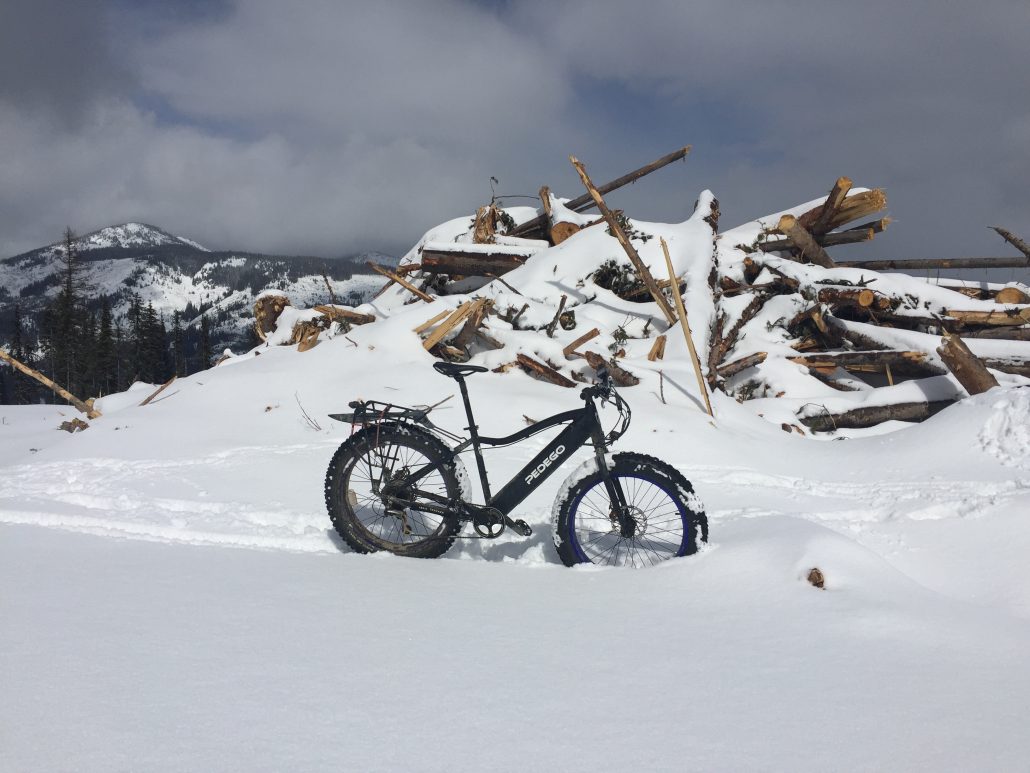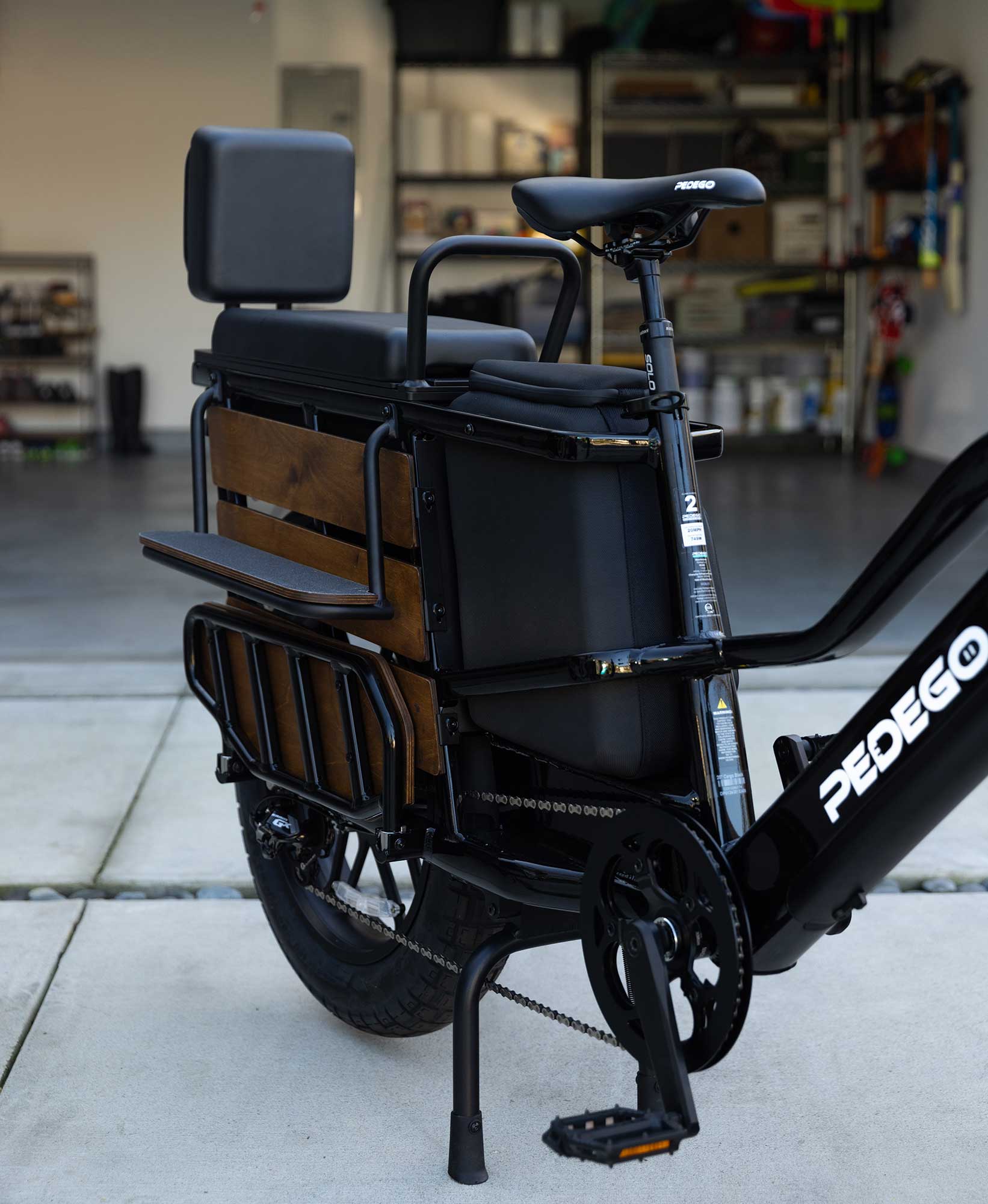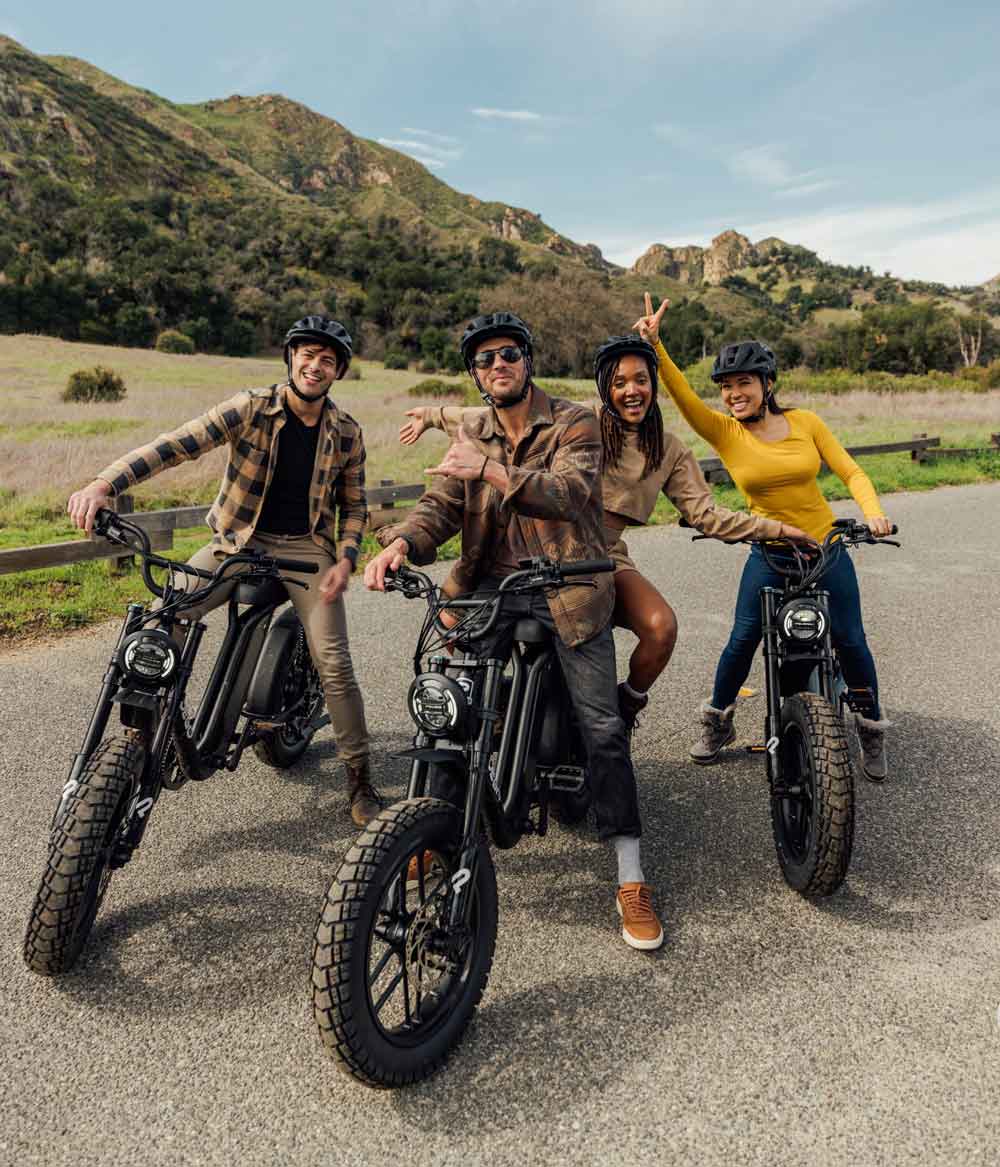What Exactly Is An Electric Fat Bike Anyway?
![]()
Occasionally we get asked what the differences are between electric fat bikes (aka fat tire electric bikes) and regular electric bikes. In this article we discuss some significant differences between the two and why fat bikes are excellent for places such as Canada.
To begin, let’s clarify that the expression “fat tire bike” was once used to describe a mountain bike. The term first came into existence about three decades ago when mountain bikes were introduced with tires that were thicker and more robust than a regular pedal bike. Now, however, the term “fat tire bike” or “fat bike” refers to bikes that have wider tires than even mountain bikes – almost three inches wider! Take the Pedego Trail Tracker electric fat bike, for instance, which boasts tires that are four inches wide.
Fat bikes with very wide tires have been around almost as long as mountain bikes. In the 1980s a Texan named Ray Molino was fashioning bike frames that accommodated super-wide tires so he could ride on sand. A decade later, Alaskan Mark Gronewald incorporated similar designs on his bikes for the snow and ice. It wasn’t until 2001, though, when one of Gronewald’s creations crossed the finish line first at the 1,700-kilometre Iditasport Impossible that fat bikes garnered real respect.
Trail Tracker electric fat bike and now offers four different models including a 20-inch frame for kids, a 24- and 26-inch frame for adults as well as a “Gorilla” version that has the swept-back handlebars of our Interceptor cruiser ebike.
The reason an electric fat bike is perfect for Canada’s climate is it handles extremely well on snow. The wider tires means there’s more surface area in contact with the ground, which allows for more stability. We’ve all taken skinny-tire bikes out into the snow before and immediately punched through the surface and stalled. But with a fat tire bike, you “float” on the surface! (For this same reason, fat bikes are excellent on sand as well.)
There’s one important thing you need to remember when it comes to fat tire electric bikes versus regular electric bikes and that’s related to tire pressure. All tire pressure is subject to the weight of the person riding the bike but typically you’ll need less tire pressure in a fat tire bike in order to enjoy what we call the “snowshoe effect.” A softer tire means more surface area is in contact with the snow (or sand) and so you’ll “float” more. If you’re on hard-packed snow, having your tires inflated more is OK but with softer snow, you’ll need a softer tire. In short, it’s a good idea to experiment with the tire pressure of your electric fat bike when riding on different surfaces.

To be clear, a fat bike is not just a few wide tires stuffed into a regular frame. Larger wheels means there has to be more room between the fork blades and the stays to accommodate larger rims and the bike frame needs to be designed in such a way that the chain line doesn’t get caught up in the wider tires.
Pedego Electric Bikes has taken all this into consideration in the design of its Trail Tracker electric fat bike and now offers four different models including a 20-inch frame for kids, a 24- and 26-inch frame for adults as well as a “Gorilla” version that has the swept-back handlebars of our Interceptor cruiser ebike.
The reason an electric fat bike is perfect for Canada’s climate is it handles extremely well on snow. The wider tires means there’s more surface area in contact with the ground, which allows for more stability. We’ve all taken skinny-tire bikes out into the snow before and immediately punched through the surface and stalled. But with a fat tire bike, you “float” on the surface! (For this same reason, fat bikes are excellent on sand as well.)
There’s one important thing you need to remember when it comes to fat tire electric bikes versus regular electric bikes and that’s related to tire pressure. All tire pressure is subject to the weight of the person riding the bike but typically you’ll need less tire pressure in a fat tire bike in order to enjoy what we call the “snowshoe effect.” A softer tire means more surface area is in contact with the snow (or sand) and so you’ll “float” more. If you’re on hard-packed snow, having your tires inflated more is OK but with softer snow, you’ll need a softer tire. In short, it’s a good idea to experiment with the tire pressure of your electric fat bike when riding on different surfaces.
Another important consideration when purchasing a fat tire bike is handlebars. The Gorilla edition of the Trail Tracker has swept back bars that make for a comfortable, relaxed ride but it also means more weight is shifted to the rear of the bike. This is fine for sand and packed snow, such as what you’ll find on Canadian streets in the wintertime, but for deeper snow, you’ll want your weight more equalized between the front and the back of the bike to allow for better traction. Because of this, a more traditional mountain-bike handlebar set-up is recommended.
The true beauty of an electric fat bike is it allows you to go through terrain you can’t typically access. Especially in the winter when all the low-lying brush is covered over: you can ride through the trees effortlessly. (Especially when you engage the powerful motor!) This is why electric fat tire bikes are used by every kind of recreation enthusiast from hunters to skiers. (One Kimberley, British Columbia, resident we know uses his to ride the short distance to the local downhill resort with skis attached because it’s a great warm up and saves gas!)
For more about electric fat bikes, visit our Trail Tracker page or drop in to your nearest Pedego dealer and take one for a test ride.




